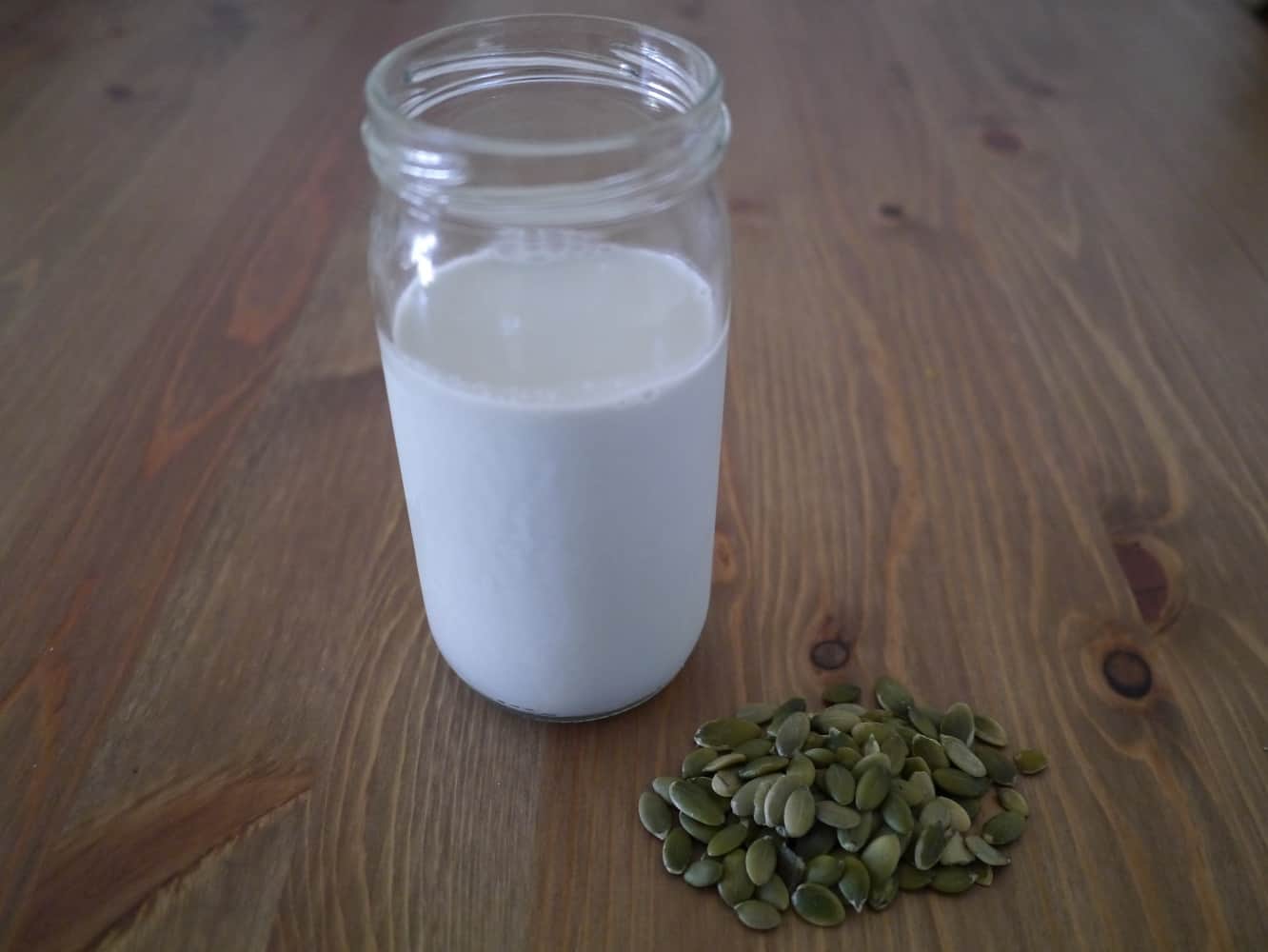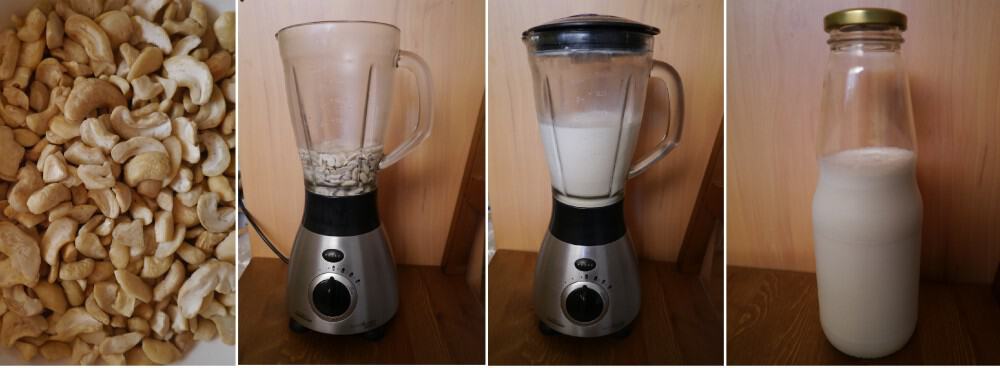Cashew nut milk is a non-dairy alternative to cow’s (or other animal) milks. Of course it’s not a milk as such, but a blend of cashew nuts and water that has a similar consistency to milk and can be used as a dairy milk replacement in some instances.
It’s got a completely different molecular make-up to dairy milk and won’t respond in the same way to heating, but it’s a great replacement for cold milk. As I’ve said before though, I’m not a vegan, so what am I doing making cashew nut milk anyway?
Well, I’m passionate about real food. And when that comes to dairy milk, this means non-homogenised, full fat milk with A2 proteins that comes from grass-fed cows, preferably organic or biodynamic. (If you’ve no idea what I’m talking about you should probably read this post, which explains the terms and also the health implications in a little more detail).
This milk can be hard to find – in Australia you won’t find it in your local supermarket – and is much more expensive than the mass-produced stuff. Consequently, I buy less than I used to. Coupled with the fact that I’m quite curious about food anyway, this means I have become more open to alternatives.
Before I stopped buying plastic I used to keep a carton of UHT milk in the cupboard for emergencies. However those cartons contain plastic and aren’t recyclable, so I don’t buy them any more. Now I keep a jar of cashew nuts in the cupboard instead.
Raw cashew nuts are minimally processed and highly nutritious. They contain 80% unsaturated fat which is predominantly oleic acid and also linoleic acid, an omega-6. Cashews also contain a number of vitamins and minerals including iron, phosphorus and calcium. (Have a look here for complete nutritional information).
My main uses for cashew milk are as an ingredient in smoothies, a dairy replacement for muesli and in some dessert recipes, and as an emergency in case we ever run out of cow’s milk, or it sneakily goes off. (Because it only ever goes off when ALL the shops are shut.) You can add cashew milk to tea and coffee (and it won’t curdle), but I prefer dairy milk for that.
How to make cashew nut milk
This recipe makes 750ml milk. You will need a jug-style blender for best results.
Ingredients:
1 cup raw cashew nut pieces (125g), soaked in water for a few hours or overnight
3 cups water (750ml)
Method:
Drain and rinse the soaked cashews.
Put cashews in blender with 1 cup water.
Blend until smooth. Add remaining 2 cups water to the jug and blend briefly to combine. And that’s it! No need to strain.
You can use immediately or store in a jar in the fridge, it will keep for up to 5 days.
Tips:
- The higher the quality of your blender, the better the results.
- The longer you blend the milk, the smoother it will be, but the heat from the friction of the blades will gradually cause the milk to warm up. If the nuts are heated too much they may go rancid.
- Use chilled water if possible, and chill the soaking cashews to help prevent the milk warming too much whilst blending.
- My blender is made of glass and I find it also helps to chill the jug in the fridge before using.
- I have tried making this is a food processor and it works okay if you have nothing else, but you will get a much smoother result with a jug blender.
- If you store your milk in the fridge, remember to shake before using.
If you need more convincing, I’ll be posting some recipes that use cashew milk on the blog in the coming weeks so stay tuned!
[leadpages_leadbox leadbox_id=1429a0746639c5] [/leadpages_leadbox]














